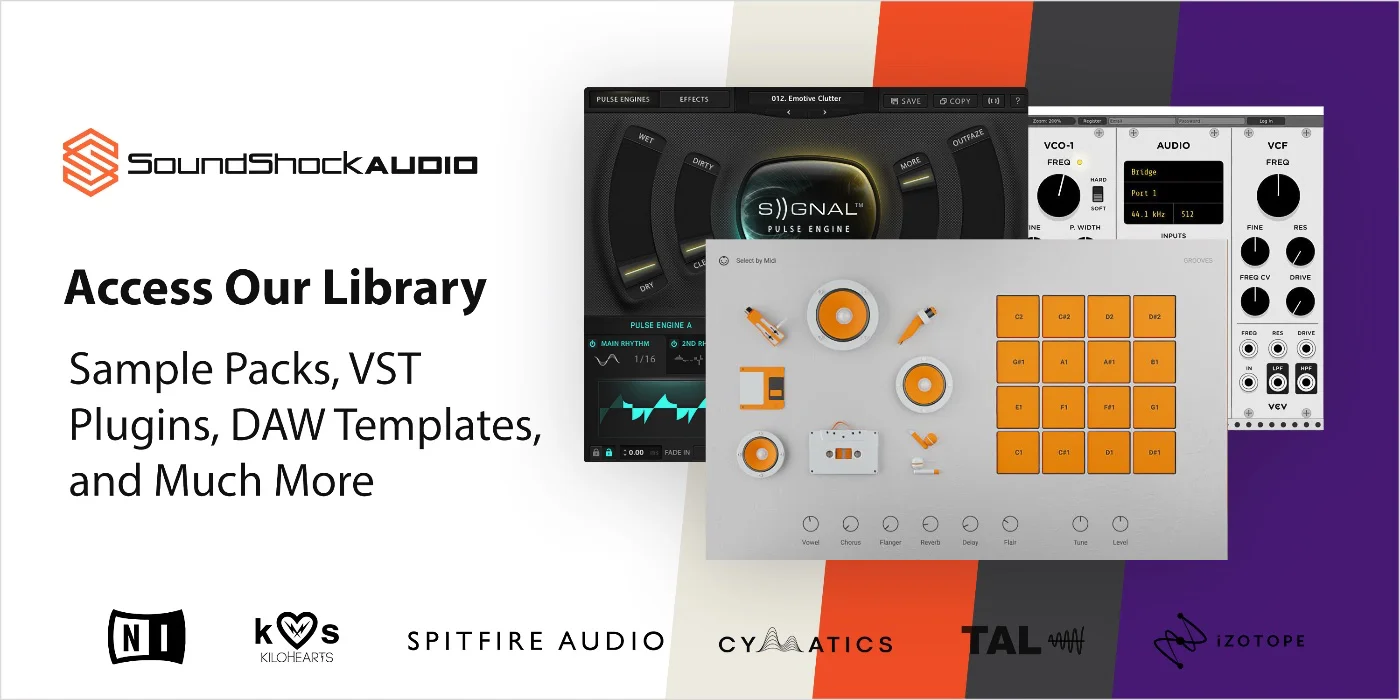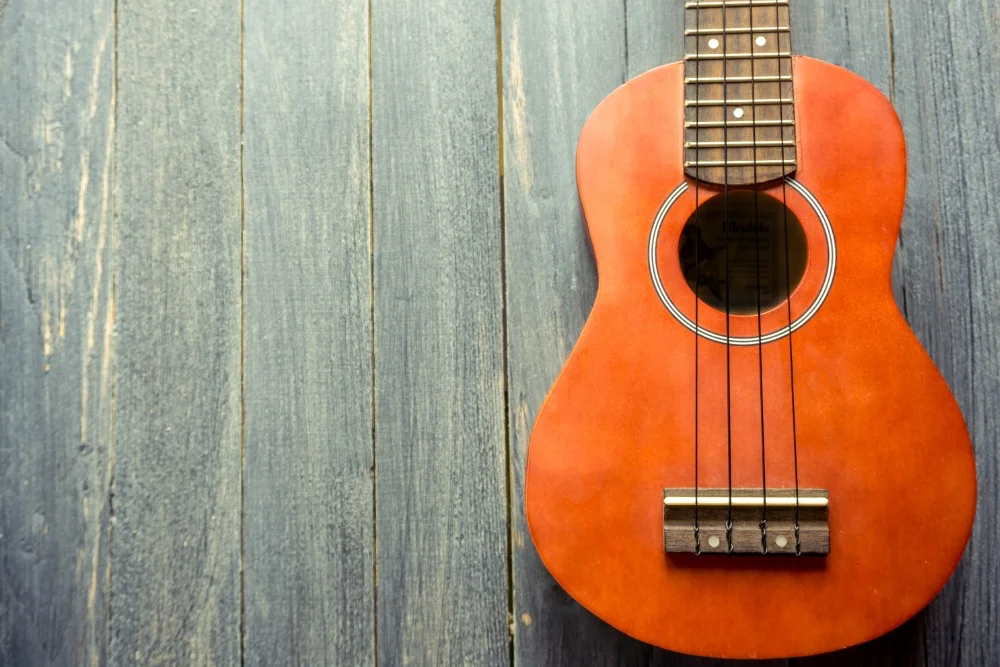Welcome, budding ukulele tone engineers! Are you ready to learn the basics of EQing a uke for maximum tone? If so, then this beginner’s guide is just what you need. Learning how to properly EQ your instrument will give your music its unique character and make it stand out in any setting. With my knowledge and guidance, I’ll help you discover everything there is to know about dialing in the perfect sound from your uke. Let’s get started!
First off, let me discuss why EQing matters when playing an acoustic instrument like the ukulele. You see, each string on a uke has its own resonance frequency that needs to be balanced with the others for them all to blend together harmoniously. That means adjusting not only volume but also brightness and texture – something which can only be achieved by equalizing correctly. This tuning process can take some time, but don’t worry; if done right it will pay off big-time in terms of improved sound quality and overall performance.
Finally, I want to stress that while learning how to EQ isn’t hard per se, understanding how different frequencies interact with one another takes practice. As such, I suggest starting with basic adjustments as outlined below before attempting more advanced techniques later on down the line. So without further ado, here are my top tips for getting the most out of your uke’s sound through effective equalization — happy tweaking!
Definition Of Eq
Equalization (EQ) is a powerful tool used by sound engineers to shape the frequency response of an instrument and improve its mix in a track. An equalizer consists of multiple bands or filters that allow users to adjust audio levels at certain frequencies, allowing them to create their own unique sound. When EQing a ukulele, one must understand the fundamentals of how the instrument produces sound and what frequencies need to be emphasized for maximum tone. With this knowledge, it’s possible to craft the perfect mix with precise control over each level within the frequency spectrum. By understanding exactly how EQ affects your ukulele playing and adjusting accordingly, you can not only make sure your performance stands out but also ensure that every note and chord sounds as clear as possible.
Tuning The Ukulele
Tuning a ukulele is an important step in achieving maximum tone. The best way to do this is with a digital tuner, which will help make sure that all the strings are tuned to their correct pitches. It’s also helpful to use a reference tuning track or app so you can tune each string accurately and precisely.
Once your ukulele is tuned up, there are several things you need to consider when adjusting the string tension and intonation of the instrument. You want to make sure that each string has enough tension on it for good playability, but not too much as this will cause buzzing sounds when playing chords. Additionally, adjusting the intonation ensures that notes played on different frets sound harmonically accurate compared to open-string notes. Achieving proper intonation takes time and patience, but once set correctly it will greatly improve your overall sound quality and tone from the ukulele.
Adjusting The Volume
Adjusting the volume of your ukulele is essential for achieving maximum tone. One of the ways to control this level is with a guitar-style volume knob, which allows you to adjust the overall sound output from your instrument. You can also use other controls such as pickups, preamps and equalizers to adjust tone levels. With these tools, you can dial in just the right amount of gain or cut off certain frequencies while maintaining total control over the sound.
When setting up your ukulele’s volume, it’s important to consider how loud you want to be heard on stage or during recording sessions. If you’re playing solo, then having a high output may not be necessary; but if you’re in an ensemble, then it might be prudent to turn down the level so that all instruments come through clearly and evenly balanced. The key here is finding a balance between too much noise and not enough clarity – something that takes practice and experimentation until it sounds just right!
Balance And Dynamics Of Strings
When it comes to getting the most out of your ukulele’s tone, balancing and setting up your strings is crucial. Here are a few tips on how to get the best sound from your string setup:
- Adjusting your string action: Your string action should be set at a level that feels comfortable and allows you to play fast passages with ease. The higher the action, the more clarity and volume you’ll have; however, too high an action can cause buzzing or make it difficult to fret notes accurately.
- Creating balance between strings: Each string should be balanced in tension so that all strings are equal in terms of both tone and feel. This will create a consistent playing experience across all four strings and ensure even sustain when strumming or picking chords.
- Experimenting with different gauges: Different gauges (measurements) of strings will produce different tones depending on what type of music you’re playing. Heavier gauge strings tend to give a fuller sound while lighter ones provide increased flexibility for faster techniques like tremolo picking.
Making sure these three components are optimized will help bring out the full potential of your ukulele’s sound. From here we can look into further enhancing this tone by adding effects such as reverb, delay, chorus etc…
Enhancing The Tone With Effects
Now that you have carefully balanced and fine-tuned your strings, it is time to take the next step in achieving a truly fantastic tone with an ukulele. Enhancing the sound of your instrument using effects can be a great way to add some extra sparkle and shine to your playing. As a ukulele tone engineer, there are several different options available for tweaking the tone and feel of your music.
One popular effect used on ukuleles is a chorus effect which creates a warm ambience around each note or chord played by adding multiple copies of slightly detuned versions of the same note or chord. This type of effect helps to thicken up the overall sound produced by the instrument and gives it more body. A reverb effect also works well when used judiciously as it adds depth and natural reverberation to notes and chords played on an ukulele. Both these effects can help create incredibly lush tones that will make any listener’s ears perk up!
Using an equalizer pedal allows for further refinement of your sound so that you can achieve just the right amount of bass, mid-range frequencies, treble, etc., depending upon what style of music you’re playing. With careful use of EQ settings, one can easily craft unique sounds that are tailored specifically to their own musical tastes.
Using An Equalizer Pedal
Using an equalizer pedal is a great way to get the most out of your ukulele’s sound. It allows you to adjust levels and frequencies through each string, giving you complete control over how your instrument sounds. To help get started, here’s a table with some recommended settings for different types of ukuleles:
| Ukulele Type | Low Frequency (Hz) | High Frequency (kHz) |
|---|---|---|
| Tenor | 80 – 120 | 3.2 – 4.5 |
| Concert | 70 – 110 | 2.8 – 4.0 |
| Soprano | 60 – 100 | 2.4 – 3.5 |
The low frequency setting helps round out the bass notes while the high frequency gives clarity and definition to higher notes without making them too sharp or piercing in nature. Adjusting these two frequencies can make all the difference when it comes to achieving the perfect tone on your ukulele! After experimenting with various settings, listen closely to determine which ones give you the best results before finalizing your adjustments.
Finalizing Settings
Once you’ve tweaked and adjusted your EQ settings, it’s time to finalize them. Using the equalizing pedal that comes with the ukulele will help you achieve maximum tone. This tool allows for further control of the sound, enhancing its overall quality. It is important to remember that not everyone likes their ukuleles to sound alike – so take some time experimenting with different levels until you find a combination that works best for you.
Ultimately, finding your perfect tone involves patience and experimentation. With just a few adjustments on an Equalizer Pedal, you can customize your ukulele’s sound to create something unique and special. Take advantage of this opportunity to make your instrument truly yours!
Frequently Asked Questions
What Type Of Ukulele Should I Buy For Maximum Tone?
When it comes to ukuleles, the type you buy makes a huge difference in terms of tone quality and sound. Whether you are just starting out or have been playing for years, selecting the right kind of ukulele is essential if one wants to experience maximum tone. While there are various brands and models on the market, each with its own unique features and strengths, some offer better tones than others.
In order to achieve the best possible tone from your instrument, it’s important to choose an ukulele that will suit your style and preferences. This means considering factors such as size, shape, wood type and construction when selecting a ukulele brand. For instance, larger body instruments produce more volume while smaller ones provide clarity and articulation; solid-wood bodies tend to give greater resonance and sustain than laminated woods; and different woods like mahogany or spruce can bring out different tones in various ways. Ultimately, finding the perfect balance between these elements is key to getting optimal results from your chosen ukulele.
It may be tempting to go for cheaper options but this often leads to poorer sounding instruments which do not deliver what was promised by their makers. Investing in higher-priced items is generally worth it since they come with higher quality materials that result in superior sounds over time – much like fine wines improve with age! All things considered then, choosing wisely when shopping for an ukulele is critical if one wishes to get the most out of their playing experience.
What Is The Best Way To Maintain My Ukulele’s Tuning?
Maintaining your ukulele’s tuning is essential for achieving maximum tone. Tuning stability depends on many factors, including string tension, gauge, and replacement. As a ukulele tone engineer, I recommend following these steps to keep your instrument in tune:
- Adjust the string tension with care. The ideal tension will depend on the size of your ukulele and playing style. Too much or too little tension can cause intonation problems.
- Choose strings carefully based on their gauge and material. Lighter-gauge strings are easier to play but lack projection and sustain; heavier-gauge strings provide more volume but require more finger strength to fret correctly.
- Replace worn strings regularly to ensure consistent tuning stability – some players replace them every few months while others wait until they start slipping out of tune easily.
By following these tips, you’ll be able to maintain accurate tuning on your ukulele over time without sacrificing sound quality or performance potential. Your careful attention to string tension and gauge selection will help you get the best possible tone from your instrument, regardless of its size or type!
What Is The Difference Between An Equalizer And An Equalizer Pedal?
An equalizer and an equalizer pedal are two different pieces of equipment used to adjust the tone of a ukulele. An equalizer is typically found in recording studios, where sound engineers can use it to fine-tune specific frequencies to get their desired tonal quality. On the other hand, an equalizer pedal is designed for live performance applications, allowing musicians to make quick adjustments on stage without having to go back into the studio.
Equalization effects can be achieved with either device, but they will differ depending on how each piece of equipment functions. Equalizers allow sound engineers to tweak individual frequency bands while also adjusting overall gain levels at once. Meanwhile, equalizer pedals offer more control over individual tones by providing settings such as bass boost or treble cut that allow users to dial in their ideal tone adjustment quickly and easily during live performances.
When it comes to achieving maximum tone out of your ukulele, both devices offer distinct advantages for different musical applications. While sound engineers might prefer using an equalizer in a studio setting due its greater flexibility and accuracy when making subtle changes to their mix, guitarists may opt for an equalizer pedal because of its portability and convenience in creating unique sounds on stage. Ultimately, choosing between these two tools depends on what type of effect you’re looking for and which one best suits your needs.
Is There A Recommended Placement For The Equalizer Pedal?
If you want to achieve the best possible ukulele tone, then knowing where to place your equalizer pedal is essential. As a ukulele tone engineer, I’ve found that getting the right sound from an instrument starts with setting up its equalizer settings in the most optimal way. It’s like creating a sonic landscape for your performance; if you set it up correctly and take care of it, you’ll get great results.
When considering how to best position an equalizer pedal on a ukulele, there are two key points: placement location and distance away from other equipment. For optimal tone optimization, make sure that your equalizer pedal has enough room around it so as not to interfere with other gear or instruments. Additionally, try placing the pedal near the bridge of the ukulele; this will help ensure that all strings receive adequate signal strength and clarity while playing.
By following these simple steps and taking into account both placement location and distance from other gear, you can confidently create a dynamic range of sounds on your uke without compromising its natural beauty – ensuring maximum tone quality every time!
How Do I Store My Ukulele To Ensure The Best Sound Quality?
When it comes to storing a ukulele, ensuring the best sound quality is key. But how do we go about this? Before answering that question, let’s explore what can happen if an instrument isn’t stored correctly. When not cared for appropriately, a ukulele could suffer from unwanted noise interference and even become warped or out of tune over time. As a ukulele tone engineer, I recommend following these tips when storing your instrument:
First and foremost, always store your ukulele in its case in order to keep dust away from the strings and bridge – this will help maintain good sound quality and reduce wear on the fretboard. Furthermore, keeping the string tension balanced by loosening them before storage is essential for preserving great tone. It’s also important to ensure humidity levels remain constant; too low humidity can cause wood warping while high humidity can encourage corrosion and rusting of metal parts. Lastly, try to avoid drastic temperature changes as they can affect playability and tuning stability.
To sum up, proper storage is critical for maintaining optimal sound quality when playing a ukulele. Storing an instrument properly requires careful attention to detail including protecting against dust accumulation, balancing string tension and controlling humidity levels. With some effort and diligence you’ll be able to make sure your ukulele sounds just like it did the day you bought it!
Conclusion
It’s no secret that a properly-tuned ukulele can provide an amazing tone. And with today’s technology, it’s easier than ever to get the most out of your instrument. By following the steps outlined in this beginner’s guide on how to EQ a ukulele for maximum tone, you’ll be able to tailor the sound of your ukulele to match any musical style or setting.
Whether you’re playing classical music at home or strumming along at a beachside jam session, having the right type of ukulele and maintaining its tuning are key components of getting great sound quality. An equalizer pedal is also essential for making subtle adjustments to your instrument’s tone. The placement of the pedal will affect how much control you have over each frequency range, so make sure it’s placed somewhere convenient yet unobtrusive. Finally, storing your ukulele correctly and regularly checking its condition will ensure that you always get the best possible sound from it.
Taking care of your ukulele is like taking care of an old friend – give it some love, attention and regular maintenance and it won’t let you down! With these tips under your belt, there should be nothing holding you back from achieving maximum tone when playing your beloved uke – just remember: practice makes perfect!
Save Money with Free Music Production Tools!

Why spend hundreds or even thousands of dollars on music production tools when you can access them all for a low monthly fee at SoundShockAudio? Subscribe now and start creating professional-sounding music without breaking the bank. We’ve got everything from sample packs, to VST plugins, and more.
Need more help when it comes to EQing check out the article, how to eq toms.
Also check out this other article how to eq piano, for more EQing tips.




